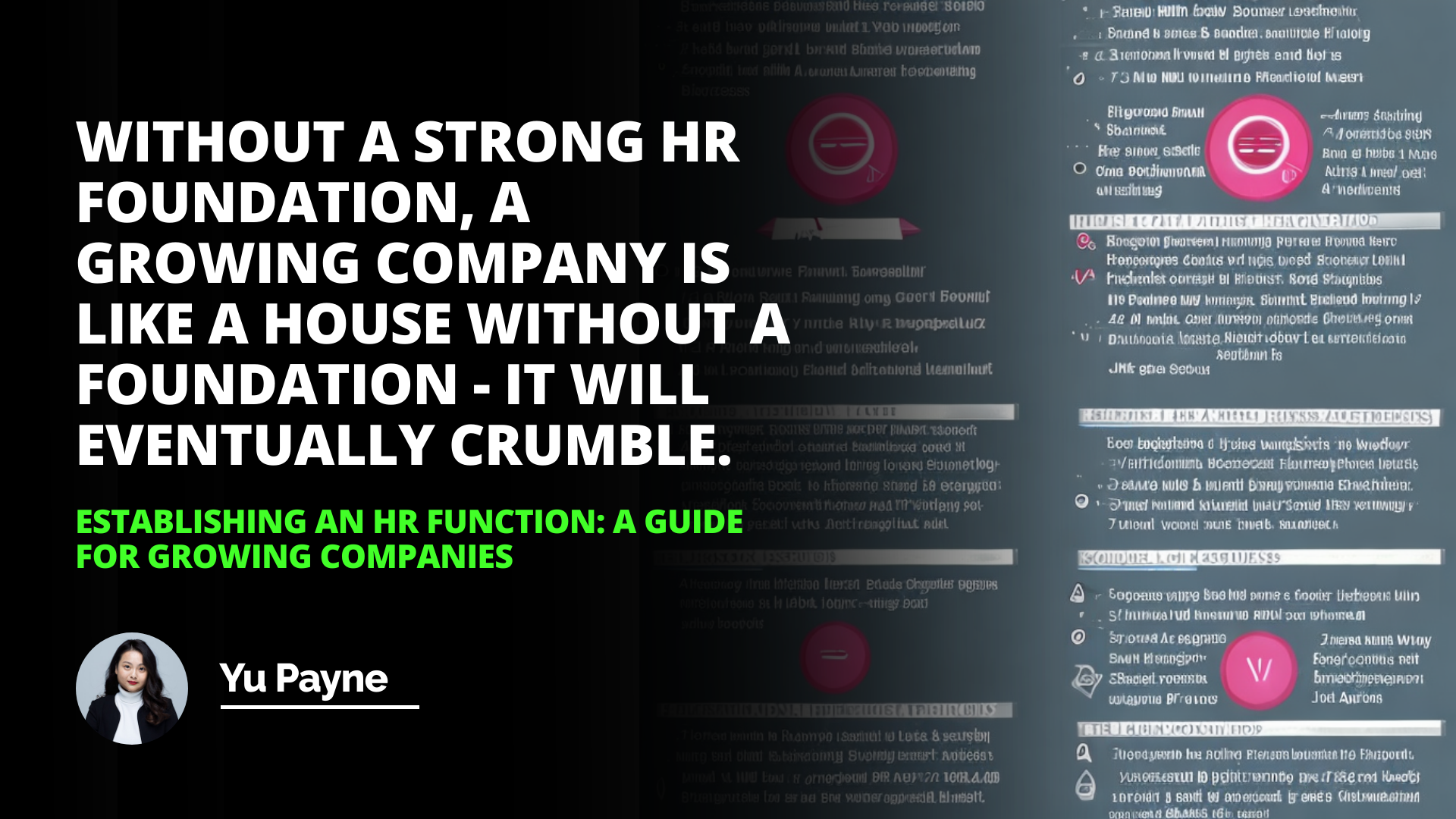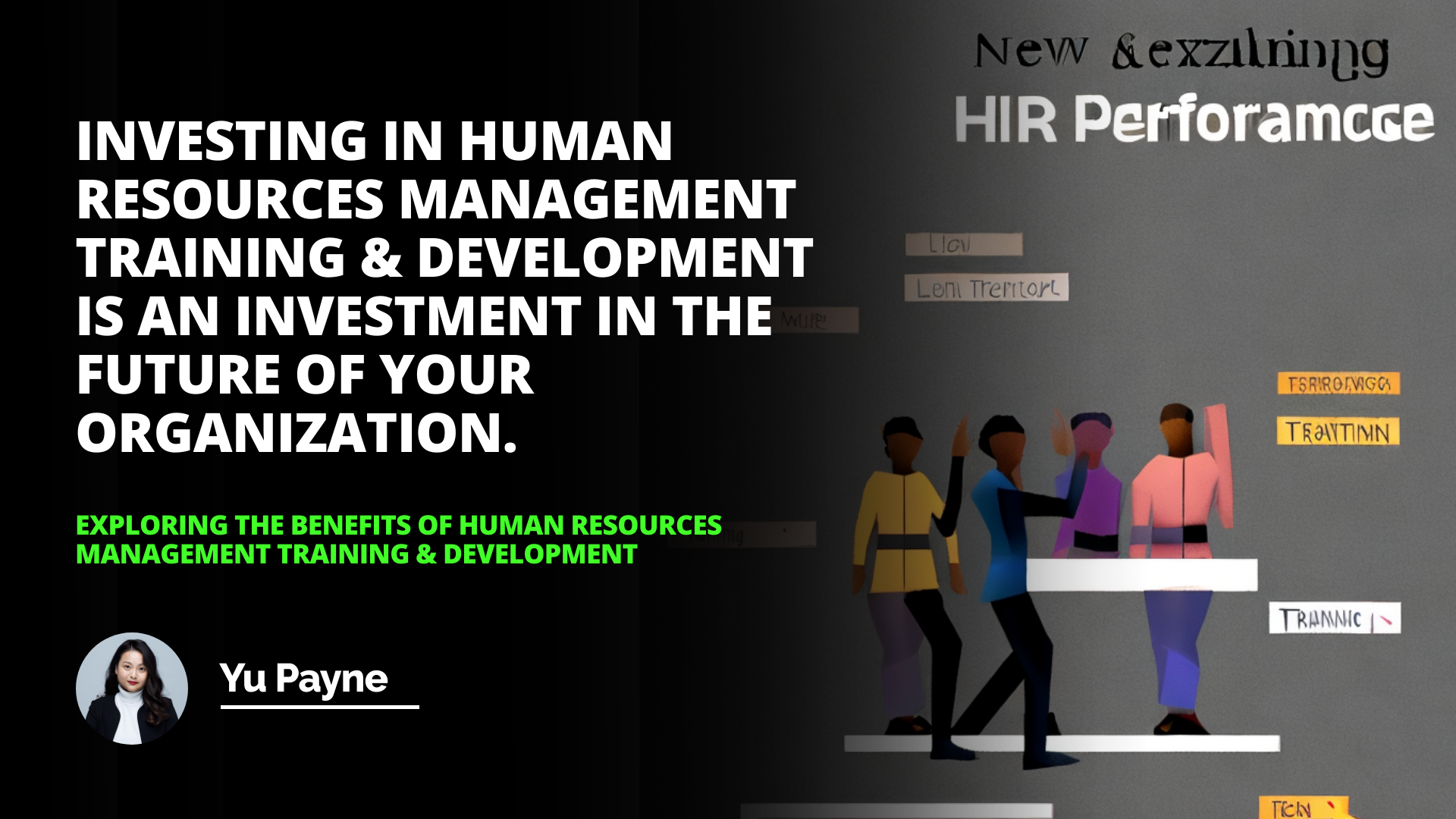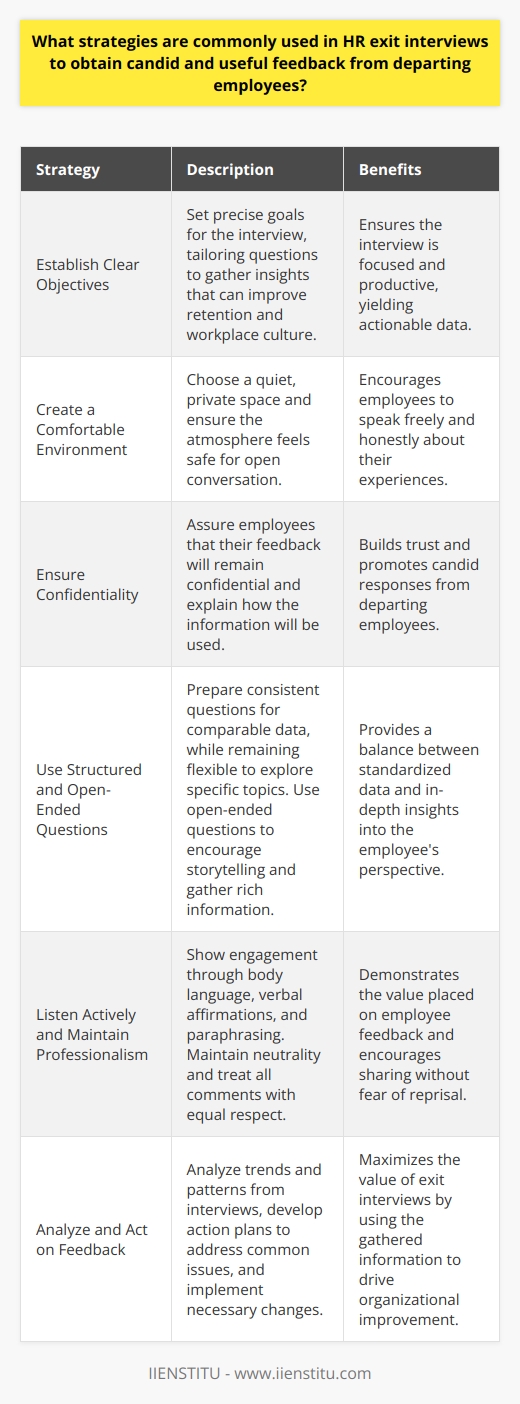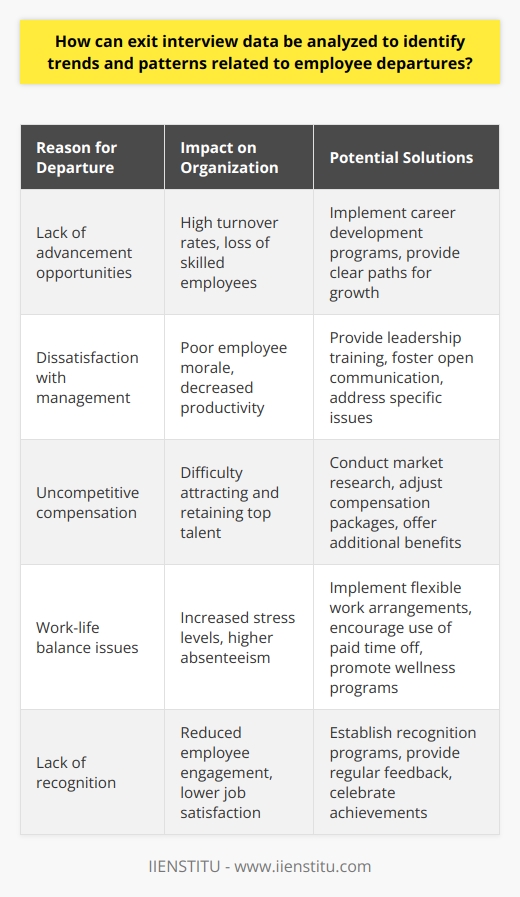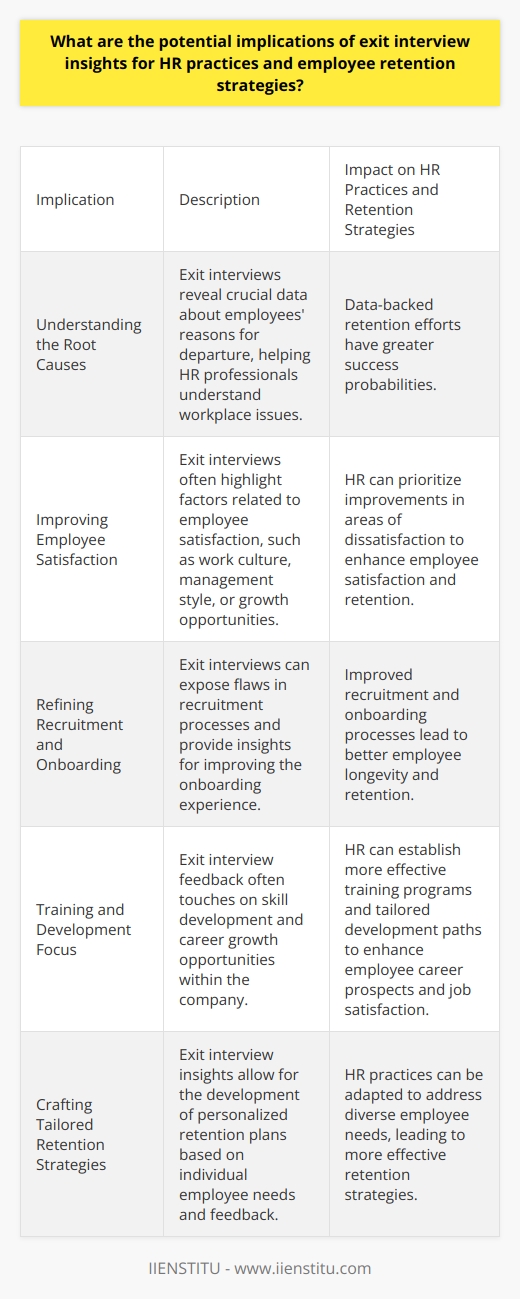In my years of working in human resources, I've come to understand the immense value of exit interviews. These conversations, held with departing employees, offer a unique window into the inner workings of an organization. They provide an opportunity to gather candid feedback, uncover hidden issues, and identify areas for improvement.
I remember one particularly insightful exit interview I conducted early in my career. The employee, let's call her Sarah, had been with the company for over five years and was a high performer. Her decision to leave came as a surprise to many. During our conversation, Sarah revealed that she felt her growth had stagnated due to a lack of challenging projects and learning opportunities. This feedback was eye-opening and led to a revamp of our employee development program.
Sarah's story is just one example of how exit interviews can drive positive change. In this article, we'll explore the process of conducting effective exit interviews, analyzing the data gathered, and most importantly, leveraging these insights to improve employee retention and satisfaction.
The Importance of Exit Interviews
Understanding Employee Turnover
Employee turnover is a natural part of any business, but high turnover rates can be costly and disruptive. According to a study by the Society for Human Resource Management, the average cost-per-hire is $4,129, and it takes an average of 42 days to fill a position. Beyond the financial costs, high turnover can also impact morale, productivity, and institutional knowledge.
Exit interviews provide a rare opportunity to understand the reasons behind employee departures. By asking the right questions and listening carefully to the answers, HR professionals can identify patterns and root causes of turnover.
Improving Employee Retention
One of the primary goals of exit interviews is to gather insights that can help improve employee retention. By understanding why employees leave, organizations can take proactive steps to address issues and create a more engaging and satisfying work environment.
For example, if multiple employees mention a lack of work-life balance as a reason for leaving, the company may need to reassess its policies and practices. This could involve offering more flexible work arrangements, encouraging employees to take time off, or addressing workload issues.
Enhancing the Employee Experience
Exit interviews also provide valuable feedback on the overall employee experience. Departing employees can offer insights into the company culture, management practices, and day-to-day operations. This feedback can be used to identify areas for improvement and make changes that benefit current and future employees.
I once conducted an exit interview with an employee who shared that he felt the company's onboarding process was lacking. He had felt lost and unsupported during his first few weeks on the job. This feedback led to a complete overhaul of our onboarding program, which has since received positive reviews from new hires.
Conducting Effective Exit Interviews
Choosing the Right Interviewer
The success of an exit interview largely depends on the interviewer. It's important to choose someone who is objective, impartial, and skilled in active listening. The interviewer should not have a direct reporting relationship with the departing employee to ensure an open and honest conversation.
In my experience, HR professionals are often the best choice for conducting exit interviews. They are trained in interview techniques and can provide a neutral perspective. However, in some cases, a manager or executive from a different department may be appropriate.
Creating a Safe and Comfortable Environment
For exit interviews to be effective, employees must feel comfortable sharing their honest opinions and experiences. The interviewer should strive to create a safe and non-judgmental environment that encourages open communication.
This can involve conducting the interview in a private location, assuring the employee that their feedback will be kept confidential, and emphasizing that the purpose of the conversation is to learn and improve, not to assign blame or burn bridges.
Asking the Right Questions
The questions asked during an exit interview should be carefully crafted to elicit valuable insights. Open-ended questions are generally more effective than yes/no questions, as they encourage employees to share their thoughts and experiences in detail.
Some key questions to consider include:
What prompted you to start looking for another job?
What did you like most about your job and the company?
What did you like least about your job and the company?
How would you describe the company culture?
Did you feel supported by your manager and colleagues?
Were there any obstacles or challenges that made your job difficult?
What could the company do to improve the employee experience?
It's also important to ask follow-up questions and probe for specific examples. For instance, if an employee mentions a lack of growth opportunities, the interviewer might ask, "Can you give me an example of a time when you felt your growth was limited?"
Documenting and Analyzing the Feedback
During the exit interview, the interviewer should take detailed notes to capture the employee's feedback accurately. It's also a good idea to record the conversation (with the employee's permission) to ensure nothing is missed.
After the interview, the feedback should be documented and analyzed. Look for patterns and themes across multiple interviews. Are there certain issues that come up repeatedly? Are there departments or managers that seem to have higher turnover rates?
Quantitative analysis can also be helpful. For example, you might track the frequency of certain reasons for leaving (e.g., lack of growth opportunities, poor work-life balance) to identify the most pressing issues.
Leveraging Exit Interview Insights
Sharing the Feedback with Key Stakeholders
Once the exit interview data has been analyzed, it's important to share the insights with key stakeholders, such as senior leaders, managers, and HR team members. This can be done through a formal report, a presentation, or a series of meetings.
When sharing the feedback, it's important to focus on the key themes and patterns rather than individual comments. This helps to maintain confidentiality and keeps the focus on systemic issues rather than personal grievances.
Developing Action Plans
The real value of exit interviews comes from using the insights to drive positive change. Based on the feedback received, the HR team should work with other stakeholders to develop action plans for addressing the identified issues.
For example, if a lack of growth opportunities is a common reason for leaving, the action plan might involve:
Reviewing and updating the company's training and development programs
Encouraging managers to have regular career conversations with their team members
Creating a formal mentorship program
Offering more opportunities for cross-functional projects and assignments
Monitoring Progress and Measuring Impact
As with any change initiative, it's important to monitor progress and measure the impact of the actions taken. This can involve tracking metrics such as turnover rates, employee engagement scores, and exit interview feedback over time.
Regular check-ins with managers and employees can also provide valuable insights into how the changes are being received and whether further adjustments are needed.
Conclusion
Exit interviews are a powerful tool for understanding employee turnover and driving positive change in organizations. By asking the right questions, analyzing the feedback, and taking action on the insights gained, companies can improve employee retention, enhance the employee experience, and create a more engaging and satisfying work environment.
However, conducting effective exit interviews requires a strategic and thoughtful approach. It involves choosing the right interviewer, creating a safe and comfortable environment, asking probing questions, and documenting and analyzing the feedback carefully.
Most importantly, the value of exit interviews lies in the actions taken based on the insights gained. By sharing the feedback with key stakeholders, developing targeted action plans, and monitoring progress over time, organizations can turn employee departures into opportunities for growth and improvement.
As an HR professional, I've seen firsthand the impact that exit interviews can have when done well. They provide a unique window into the employee experience and offer invaluable insights that can help shape the future of an organization. By embracing this powerful tool, companies can not only reduce turnover but also create a workplace culture that attracts, engages, and retains top talent.




